- History of Swayambhunath Temple:
- The Ideas Regarding Architecture That Came from Swayambhunath Chaitya
- Swayambhunath Chaitya is surrounded by a vast number of shrines and temples.
- How exactly can one get to the Maha Chaitya Swayambhunath?
- Why is Swayambhunath Temple called Monkey Temple in Nepal?
- Where is Swayambhunath Temple Located?
- How to reach Swayambhunath Temple?
- Entrance fee for Swayambhunath Temple
- Why do people visit Swayambhunath? What are the famous attractions of Swayambhunath?
When one's mind is at ease, it is impossible to forget the experience of ascending to Swayambhunath to visit the Buddhist temple there. One of the oldest religious sites in Nepal is the Swayambhunath Temple, which can be found on a hilltop about three kilometers west of Kathmandu. This stupa is considered to be the oldest one in all of Nepal. This location was already a popular pilgrimage site in the 5th century, as indicated by some etched historical records, which can be found here.
Both locals and outsiders should make an effort to check it out when they are in town. This is one of the best places in the world to observe religious peace, as evidenced by the fascinating marriage of Buddhism and Hinduism that can be found here. A large number of Buddhist (Vajrayana) and Hindu pilgrims ascend the steps from the east every morning and evening. As they do so, they walk past the golden Vajra (Tibetan Dorje) and perform a ritual that involves circumambulating the stupa while spinning the prayer wheels that are located at the base of the stupa.
According to the Gopalrajavamsavali (one of the oldest ever chronicles), King Vrsadeva, who was King Manadev's great-grandfather, established Swayambhunath at the beginning of the fifth century CE. King Manadev was the founder of Swayambhunath. In spite of the fact that this is a Buddhist monument site, several Hindu monarchs have also praised it. Pratap Malla, who was the famous and powerful king of Kathmandu at the time and built the eastern stairs in the 17th century, maybe the most famous in this area.
History of Swayambhunath Temple:
The area that is now known as Kathmandu was once covered by a vast lake in the distant past. During that time, the great saint Vipaswi Tathagat came to this lake and threw a lotus seed into the water. After thousands of years, the seed grew into a massive bloom with thousands of petals that covered the entire valley in dazzling light. The Bodhisattva of knowledge and study, Manjushree, was one of the many great saints who were fascinated with this mysterious blossom and decided to reach out to the places where the radiant lotus flower glowing.
Afterward, in order to facilitate easier access to the location for human pilgrims who were interested in viewing the magnificent light emanating from the lotus. Manjushree dug a gorge at Chovar, which resulted in the lake being drained and the valley is left behind. The flower eventually transformed into a hill, and the light shaped the hill into a stupa. The area is currently referred to by the name Swayambhunath, which literally translates to "Self-created." Swayambhu Chaitya developed over the course of time and experienced morphological shifts. The current appearance of Chaitya is the result of maintenance and restoration work that was finished in the year 1984 B.S. It reaches a height of 77 meters from the ground, But the temple is just 101 feet tall.
Because of the hundreds of monkeys that used to live in the area around the Swayambhunath Temple, it is also referred to as the "Monkey Temple." We have a mythological idea that while Manjushree was erecting the hill for the location of the stupa, he was supposed to keep his hair short, but he couldn't, it grew long and fell head lice and turned into the monkeys. Because of this, these monkeys are revered as holy. According to the legends, the monkeys that live on the hill today evolved from lice.
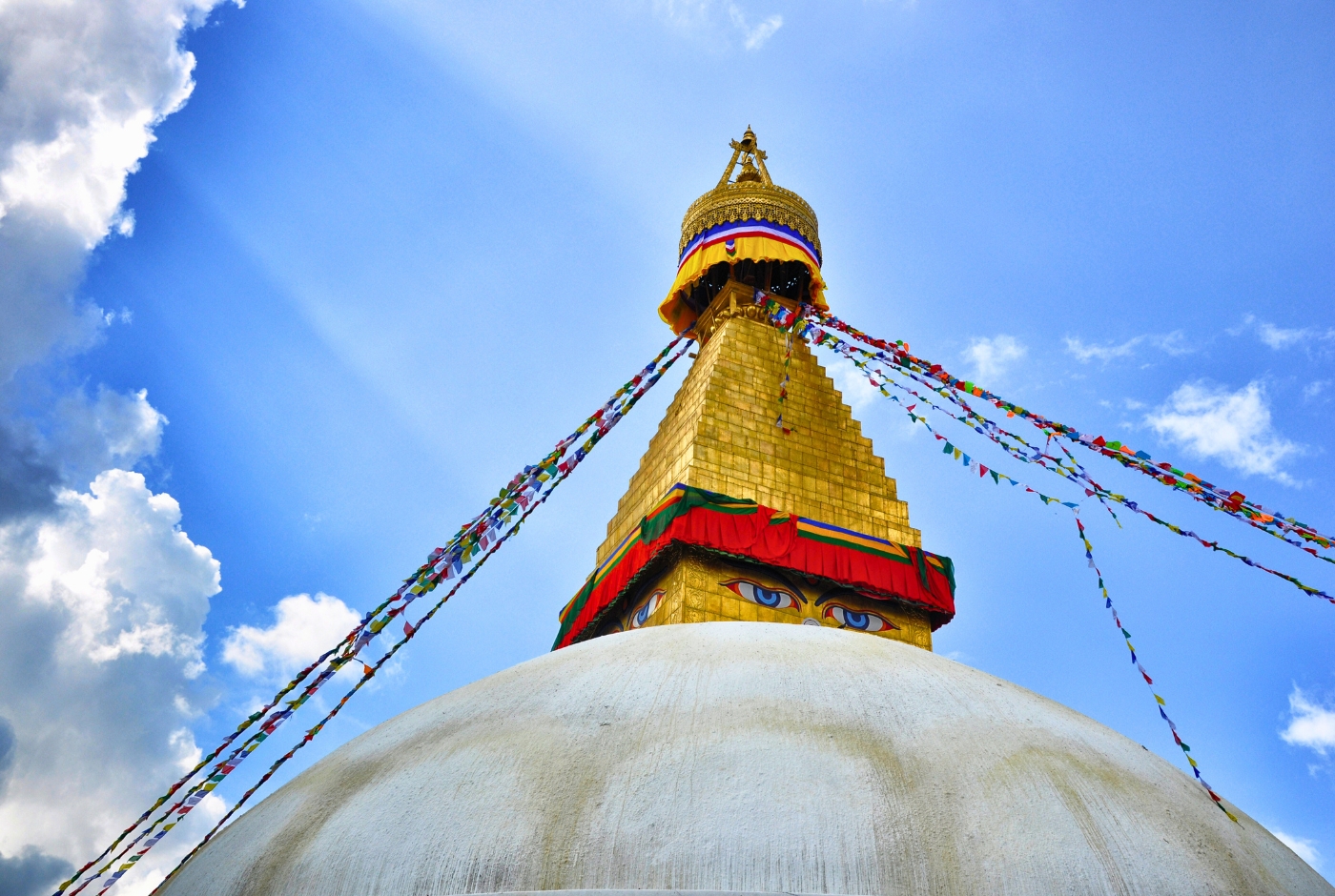
The Ideas Regarding Architecture That Came from Swayambhunath Chaitya
In terms of its design, the Swayambhunath Chaitya can be broken up into the following four sections: The first component is the dome of the stupa, which acts as the structure's base. This is the symbol for the element of water. This is because the white soil has a peculiar composition, which is referred to as sakhwa in the local language. During ritual ceremonies, the sakhwa is thrown over the dome to finish the ceremony.
The earth element comes in at number two. It is known as Garva, which means womb, due to the fact that it is concealed inside the dome and has the shape of a traditional triangle.
Hermica is the third part of the structure, and it is a cube-shaped structure that sits atop the dome. Hermica is meant to represent fire. There is a painting of Buddha's eyes and wisdom eyes on each of the structure's four sides. These eyes are looking in every direction. It is said that you are in a meditative state because your eyes are only partially closed and you already know the answers you are looking for. All that is required of you is to gaze intently into the depths of your heart, soul, and inner being. Just 'Look Inside.' Above each set of eyes on the Buddha's face is a third eye, which represents his ability to see everything. Under the pair of eyes of a character in the Nepali alphabet, there is the number "1," which represents the unity of all things. This number takes the place of a nose. Torans that have sculptures carved into them are placed atop the stupa's cube-shaped structure at each of the four corners of the structure. In the Tantrayana school of thought, these sculptures have the symbolic meaning of the Panch Buddhas, which are the five Buddhas. They are as follows:
- Vairochana is the master of the temple and resides in the center of the building. White is the color of this.
- The direction east is associated with Akshobhya, which denotes the cosmic essence of consciousness. There is a great number of colors black and blue.
- Ratnasambhava is the deity that represents the cosmic quality of experience; it is oriented toward the south. Yellow is the color.
- Amitabha, the Buddha who is seated in the west, is symbolic of the sense of taste (pleasing or bad). The color in question is red.
- The cosmic element of confirmation is represented by Amonghasiddhi, which is oriented toward the north. The shade in question is green.
The fourth and final tier is comprised of thirteen tiers that rise up from behind the torans and have a spherical shape. These tiers represent the air that exists in nature, also known as the atmosphere. These golden-edged levels are stacked with the assistance of Yasin, which is a timber pillar that is 22 meters in length. Yasin is positioned inside the dome in such a way that it does not touch the round tiers that make up the pinnacle. This allows it to be flexible and contributes to the structure's ability to withstand the effects of an earthquake. So far, only three different iterations of Yasin have been seen.
The lengths of the two that came before this one were 16 and 18 meters, respectively. Yasin is required to be treated as a human being by the priest of Swayambhu. When a Yasin is replaced, the new one is treated like a bride, and all of the rites connected with welcoming a new bride are performed. On the other hand, the rituals associated with death are performed on the previous Yasin. The 13 layers are a representation of the 13 stages that regular people have to go through in order to reach Nirvana. The gajur, also known as the pinnacle, can be found on top of the 13 tiers. That is meant to represent the heavens or space.
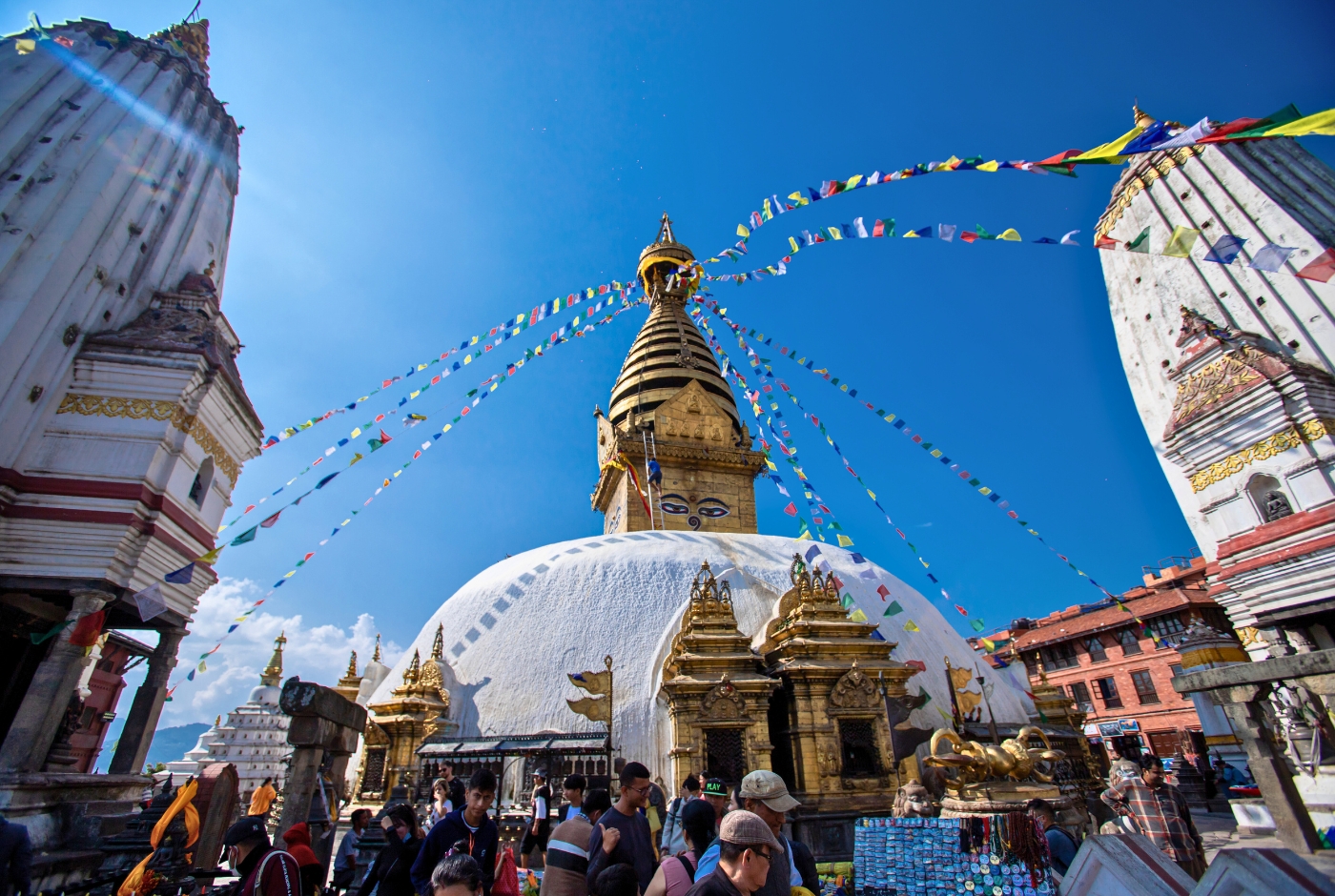
Swayambhunath Chaitya is surrounded by a vast number of shrines and temples.
Aside from its unusual architecture, Chaitya is surrounded by a number of shrines and temples, some of which date back to the Licchavi period and have influenced the interest of visitors due to their age and architectural significance. All three of these additions—the Tibetan monastery, the museum, and the library—are fairly recent. The following is a list of some of the more famous landmarks that can be found in this area:
Pratappur and Anantapur were both founded by King Pratap Malla, who also constructed as the left and right hands of Swayambhu Chaitya. One of these chaityas was located in the south, and the other was located in the north. Anantapur Pratappur is the name given to the region in the north, while Anantapur Pratap Malla's Loving Queen is the name given to the region in the south.
The massive brass-plated Vajra (also known as a thunderbolt or Dorje) can be found near the entrance on the east side of the stupa, at the top of the 312 stone stairs. This mandala is known as the Vajra Dhatu Mandala. This is a symbol used in Tibetan Buddhism that represents the potential for one to achieve enlightenment. Vajra is depicted sitting atop a large metal plate that is known as a Mandala. On the back of the plate are depictions of 12 different animals, one for each month of the Tibetan calendar. Lions have made their homes on either side of the Vajra.
The Harati Temple is located to the north of the Chaitya and is a two-story structure housing a shrine. The smallpox deity Harati, who is also known as Ajimaya and Sitalamaju, is revered as the protector of children under the age of 12 and the Guardian of Swayambhu Stupa. People worship him because they think that anyone who kills Swayambhunath Mahachaitya will pay for it.
Gompa is Tibetan for "monastery prayer room." Food offerings for Harati are prepared in the kitchen on the lower level of the gompa that is located on the western side of the compound. From the top of the gompa, visitors will have a view of the stupa and Buddha statue that are located on the west side of Mahachaitya.
Buddha Dozing: There is a bronze statue of Buddha and many examples of traditional Tibetan paintings at the Dewa Dharma Monastery.
Shree Karma Raj Mahavihar is an active Tibetan monastery that can be found in the complex's northeastern corner. Inside, there is a large statue of Buddha, and pilgrims can be seen lighting candles made of yak butter. It was completely destroyed by the earthquake that occurred in 2015. Nevertheless, a significant number of improvements have been made.
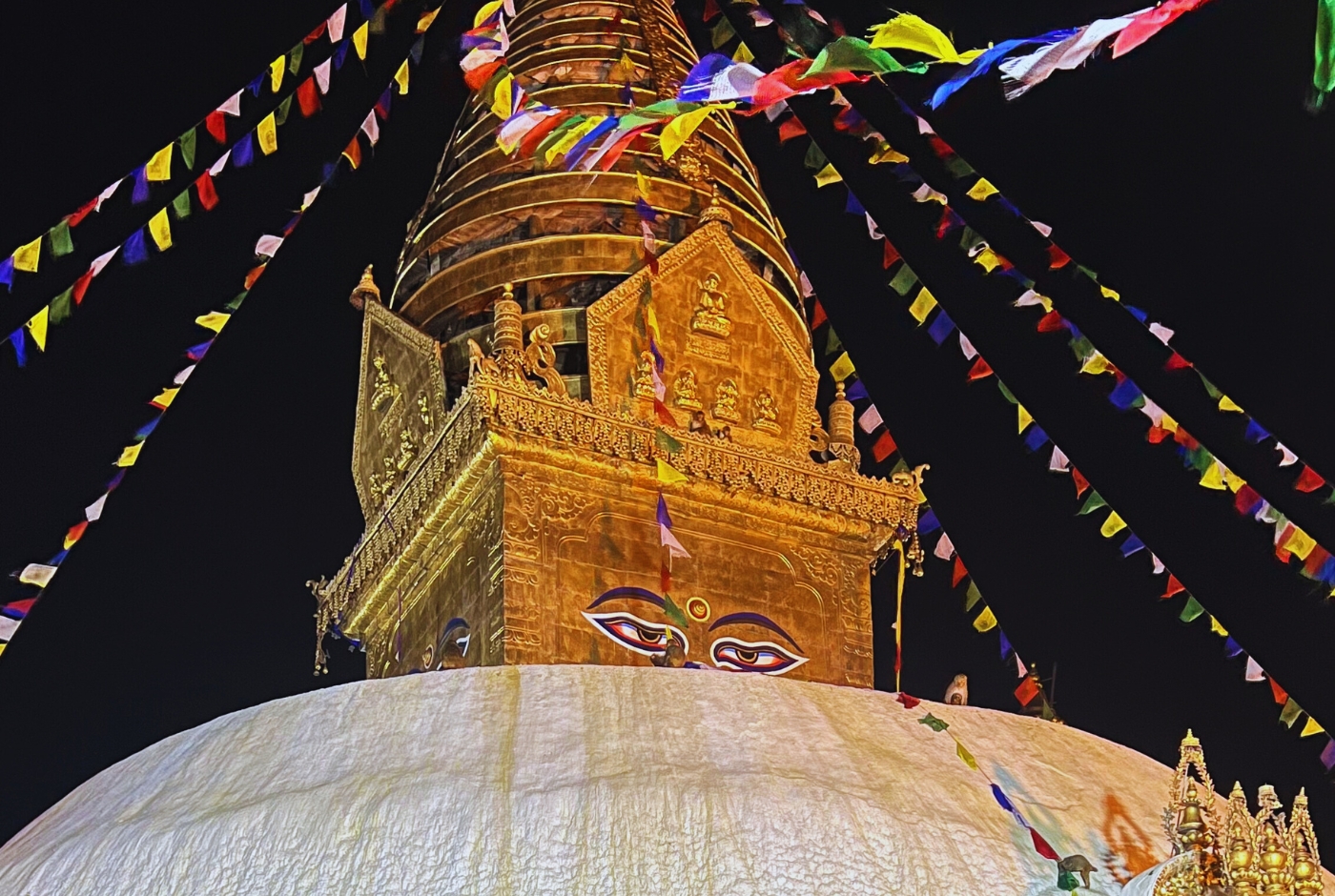
How exactly can one get to the Maha Chaitya Swayambhunath?
The location has two access points: the first is a steep stone staircase that leads directly to the temple's main platform from the top of the hill to the east; the second is a vehicle road that circles the hill to the south and leads to the southwest entrance. Both of these access points are located on the same hill. Visit the Mahachaitya in the springtime or in the fall for the most pleasant weather. Before 9 o'clock in the morning, when there are still more pilgrims than visitors, Swayambhunath is at its most breathtaking.
At long last, I've found the perfect place to escape the chaos of the Kathmandu valley while also taking in its breathtaking panoramas. The architecture and monuments of Swayambhunath will present a challenge to tourists and history buffs who visit the site. There is a good chance that we will see a monkey wandering around the area, which is yet another significant feature of this destination. It is strongly advised that you do not leave any food out for the monkeys to consume at any time. People who are looking to find mental calm are drawn to the locations because of their peace.
Why is Swayambhunath Temple called Monkey Temple in Nepal?
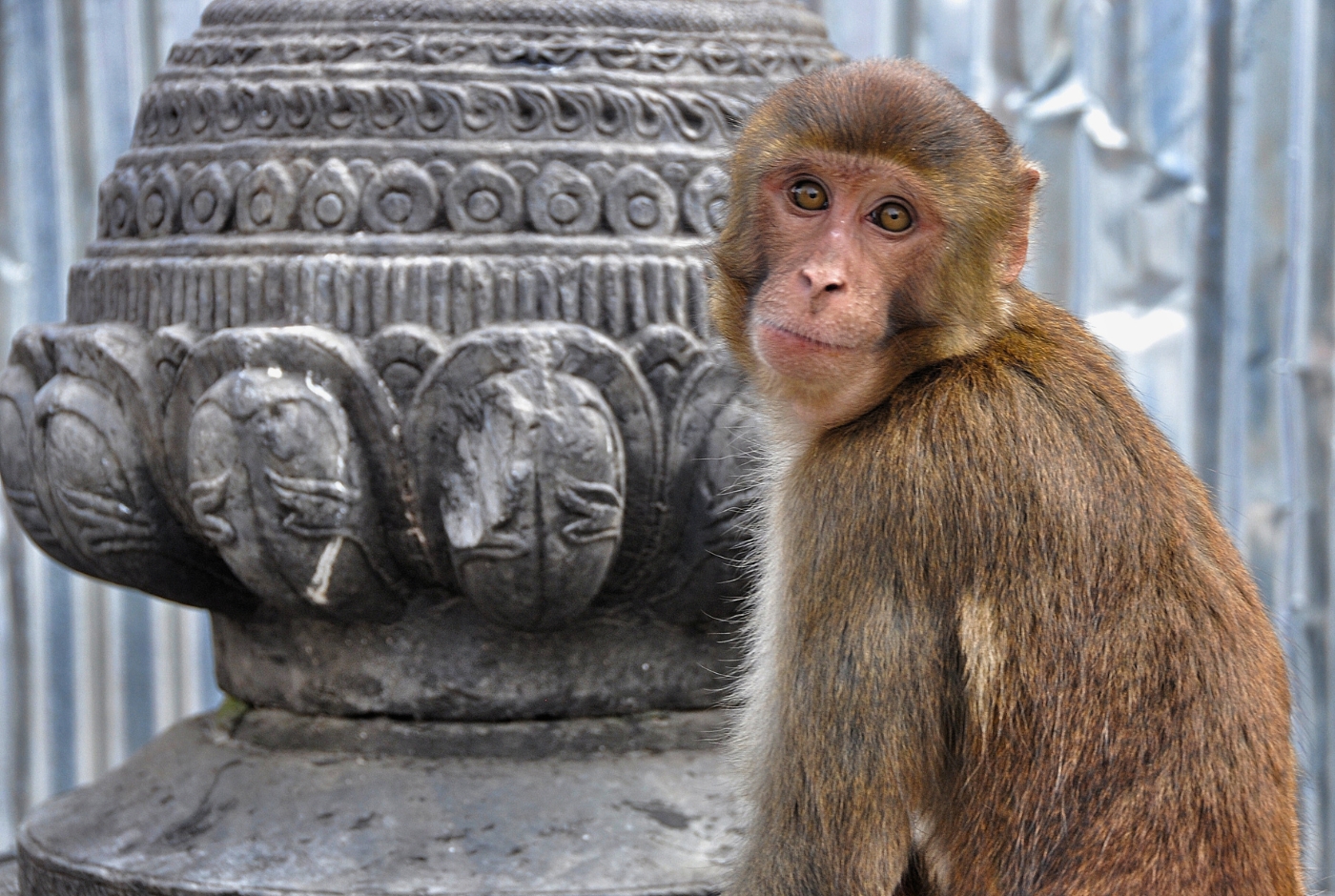
Swayambhunath in Kathmandu, Nepal is called the Monkey Temple because of the many monkeys that live around it. The monkeys are considered holy and are said to have evolved from head lice.
According to legend and myths, Manjushree, the bodhisattva of wisdom, was raising the hill on which the stupa now stands. He was supposed to keep his hair short, but it grew long, and he got head lice. It is believed that the head lice transformed into the monkeys that live in the temple today. Monkeys live in the northwest part of the temple in Swayambhunath Temple; they are considered holy due to this legend.
What to expect: You might see numerous amount of monkeys wandering around the stupa, temple, and stairs, including some that are waiting to steal your food, items, and other things. The monkeys are more active at night after the pilgrims and priests have left than they are at night. Be careful around the monkeys, as they can be mischievous and scare visitors.
Stay calm, Keep your belongings safe, observe them from a distance, and respect them. Don't feed them, avoid eye contact, don't tease or touch them, and avoid carrying visible foods.
Where is Swayambhunath Temple Located?
Swayambhunath Temple, also known as the Monkey Temple, is located on a hill in the Kathmandu Valley, 3 km west of Kathmandu City. It's situated in the northwest of the valley and is one of Nepal's most sacred Buddhist stupas.
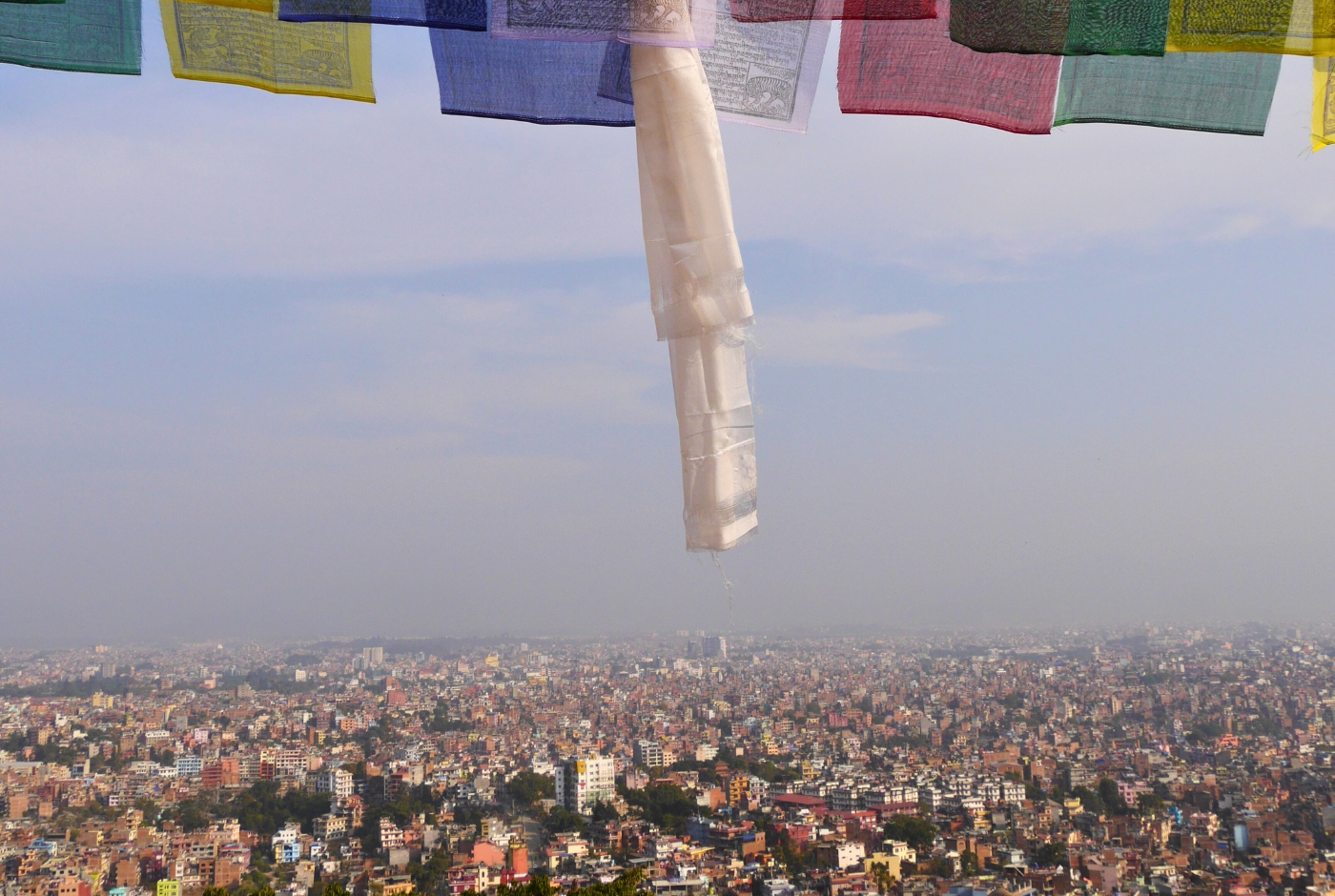
Exact Location of Swayambhunath Temple
Monkey Temple is located in Asia, Nepal, within the capital city Kathmandu. It sits atop a hill along Swayambhu Marg, showcasing the perfect panoramic view of the Kathmandu Valley.
- The exact coordinates of the main stupa are 27.7149° N latitude and 85.2906° E longitude
- The entrance gate is positioned at 27.7143° N, 85.2915° E.
It is approximately 3 km from Thamel, Kathmandu’s popular tourist hub, which takes around 10–15 minutes by taxi or bike. From Tribhuvan International Airport (TIA), the distance is about 10 km, requiring a 25–30 minute ride depending on traffic.
How to reach Swayambhunath Temple?
There are several convenient methods and ways to get to Swayambhunath Temple in Kathmandu. If you travel the Swayambhu Marg, it is only around 5 km away from the heart of Kathmandu. You can take the help of Google Maps on your phone. It will show you the exact location and the direction of Swayambhunath Temple (Monkey temple). Additionally, you can use a taxi or cab to get to the Swayambhunath Temple. If you are familiar with the routes, public transport is also an option. The location has excellent access to other locations as well.
Likewise, you can also use mobile apps like Indrive and Pathao for a quick ride to Swayambhunath. This is a much easier and more convenient option.
Entrance fee for Swayambhunath Temple
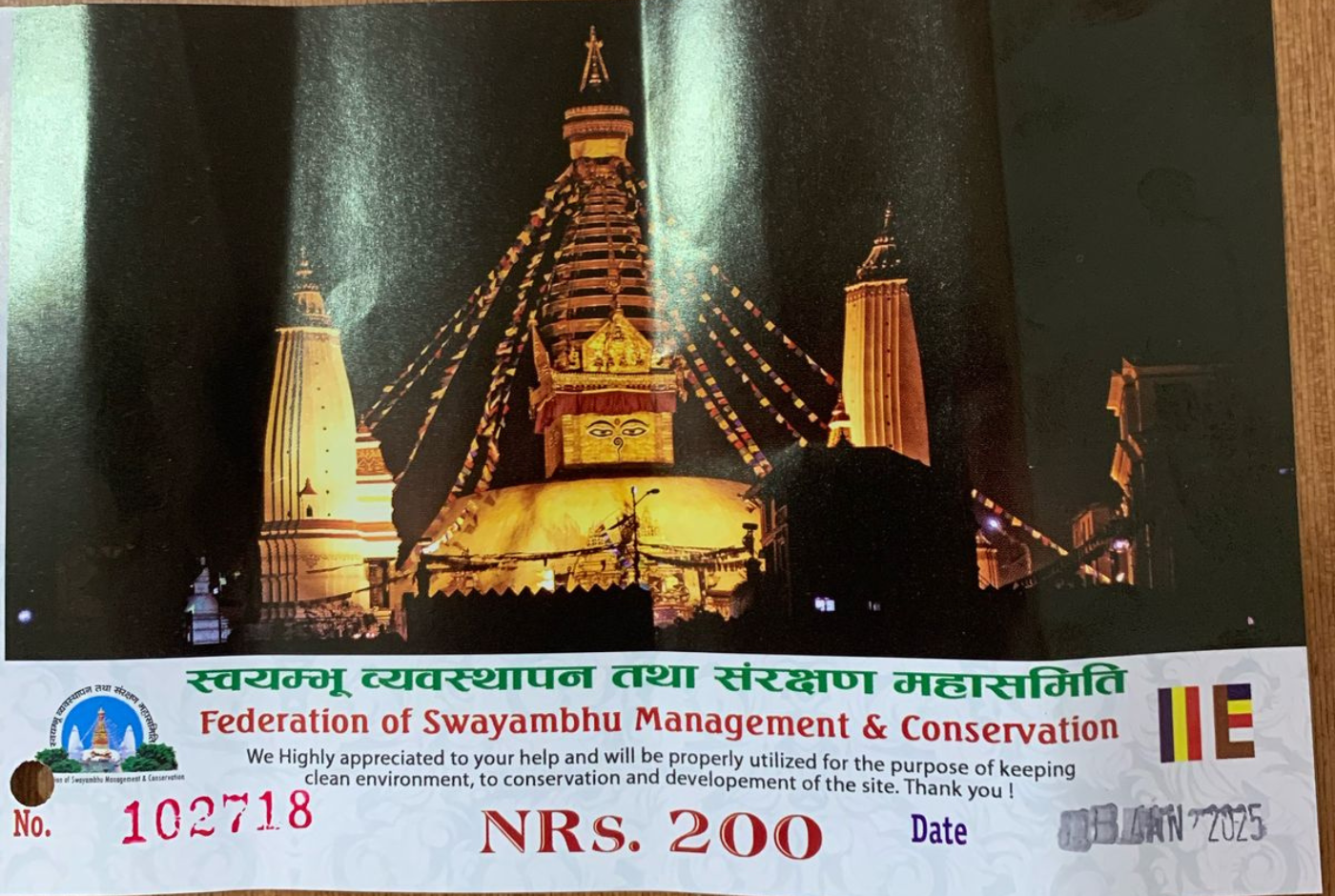
The entrance fee to Swayambhunath Temple (Monkey Temple) in Kathmandu, Nepal, is NPR 200 for foreign nationals. Children under 10 years old and Nepalese people usually get free entry. The fee is collected at the top of the stairs before entering the temple complex. Inside the complex, visitors can explore the giant stupa, intricately carved statues, and small souvenir shops. On Buddha Jayanti, one of the most significant Buddhist festivals, entry to the temple is free for everyone.
Opening hours of Swayambhunath Temple: It opens 24 hours a day, seven days a week. Visitors can enter and explore the temple complex at any time of their choosing.
Why is Swayambhunath Temple famous?
Swayambhunath, also known as the "Monkey Temple," is famous for its ancient Buddhist stupa, a UNESCO World Heritage site, and the numerous monkeys that roam the temple grounds. It's a significant religious site, offering panoramic views of Kathmandu Valley, and is a popular tourist attraction.
- Sacred Stupa: Swayambhunath is one of the oldest Buddhist stupas in Nepal, dating back to the 5th century. It is considered a very sacred site, drawing pilgrims and tourists alike.
- The "Monkey Temple": The temple's nickname is due to the large population of monkeys that live in and around the stupa, often seen roaming freely on the grounds.
- Panoramic Views: Located on a hilltop, Swayambhunath offers stunning views of Kathmandu Valley and the surrounding Himalayan mountains.
- UNESCO World Heritage Site: The site's historical and cultural significance led to its inclusion in the UNESCO World Heritage List in 1979.
- Religious Significance: Swayambhunath is a place where both Buddhist and Hindu faiths converge, with deities and symbols representing both traditions.
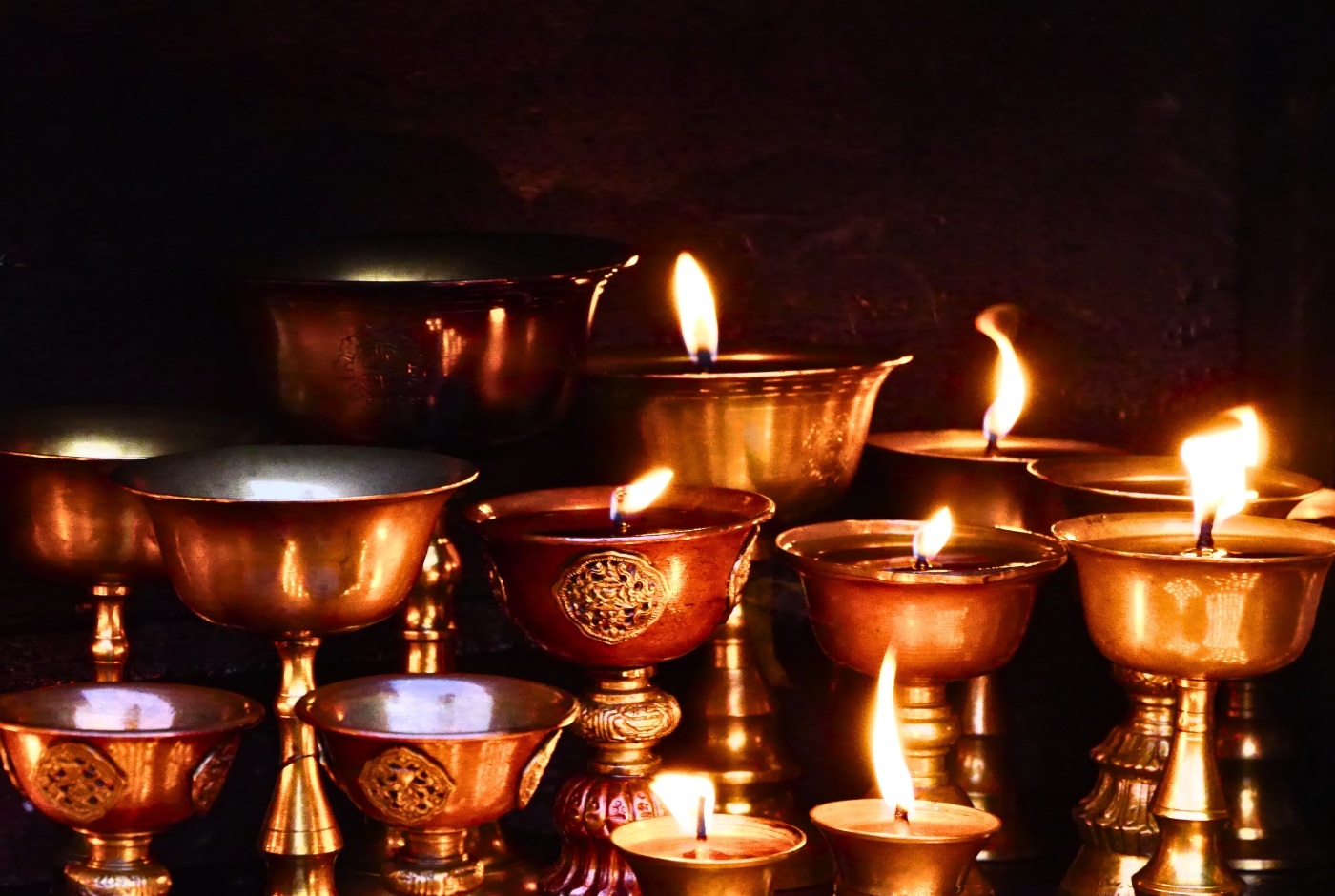
Why do people visit Swayambhunath? What are the famous attractions of Swayambhunath?
Swayambhunath, also known as the Monkey Temple, is a significant site in Kathmandu, Nepal, offering a unique blend of spiritual and cultural experiences. It's a UNESCO World Heritage Site, a revered Buddhist stupa, and a popular tourist destination, making it a must-visit for its history, architecture, and breathtaking views.
Religious and Cultural Significance:
- Ancient Buddhist Stupa: Swayambhunath is a highly revered Buddhist stupa, a symbol of faith and peace.
- Hindu-Buddhist Harmony: The complex incorporates Hindu temples and deities, showcasing the peaceful coexistence of both religions in Nepal.
- UNESCO World Heritage Site: Its historical and cultural importance has earned it recognition as a World Heritage Site, according to the UNESCO website.
- Pilgrimage Destination: It's a major pilgrimage site for Buddhists from around the world.
Architectural and Visual Appeal:
- Iconic Stupa: The central stupa, with its gilded spire and Buddha's eyes, is a distinctive and recognizable symbol of Nepal.
- Panoramic Views: Located on a hill, it offers stunning panoramic views of the Kathmandu Valley and the surrounding Himalayan mountains.
- Monkey Population: The resident monkey population, which earned it the nickname "Monkey Temple", adds to its charm and makes it a unique attraction.
- Prayer Flags and Wheels: Thousands of prayer flags flutter above the stupa, and prayer wheels are found around the base, adding to the spiritual atmosphere.
- Symbolism: The stupa's structure is deeply symbolic, representing the earth, the stages to nirvana, and the five qualities of Buddhist wisdom
Other Attractions:
- Swayambhunath Buddhist Museum: The museum houses artifacts and exhibits related to the history and culture of Swayambhunath.
- World Peace Pond: A beautiful pond with a statue of Buddha holding a cauldron, where visitors can try to throw coins in for good luck.
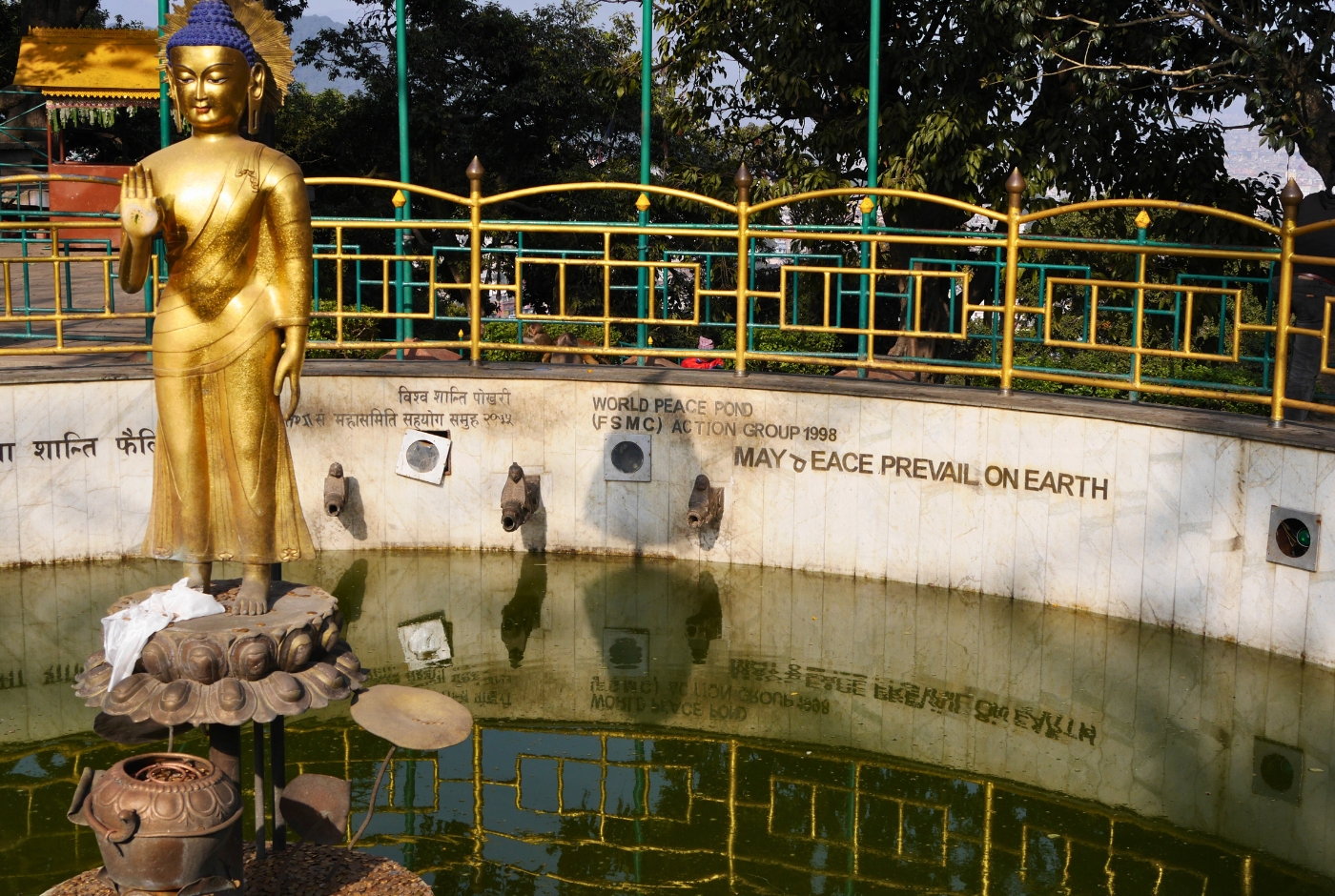
In essence, Swayambhunath is a place where history, religion, and nature converge, offering a rich and unforgettable experience for both tourists and locals alike.
Who is the god of the Swayambhunath?
The primary deity associated with Swayambhunath is Adi-Buddha (Swayambhu Jyotirupa), the original, self-arisen Buddha, believed to have manifested as the eternal flame of wisdom at this site. Additionally, the stupa houses the Five Dhyani Buddhas, representing different aspects of enlightenment, and features images of Buddha Shakyamuni, the historical Buddha.
Is Brahma a Swayambhu?
Yes, in Hinduism, Brahma is often described as Swayambhu, meaning "self-born" or "self-created." This concept suggests that he emerged from himself, without needing a separate creator.
- Swayambhu and Creation: The term "Swayambhu" signifies a deity who is not created by another but arises from within itself. This concept is often associated with Brahma's emergence from the cosmic egg (Hiranyagarbha) and the beginning of creation.
- Diverse Accounts: While some accounts depict Brahma emerging from the navel of Vishnu, others describe him as self-born, highlighting his divine origin.
- Brahma's Role: Brahma is considered the creator of the universe in Hindu cosmology. He is one of the Trimurti, the three major deities, alongside Vishnu and Shiva.
- Svayambhu and Other Deities: The term "Swayambhu" is also used for other deities and entities, including Brahman, the ultimate reality in the Upanishads, and Shiva.
How old is the Monkey Temple?
The "Monkey Temple," officially known as Swayambhunath Stupa, is estimated to be over 2,000 years old. While its exact founding date is debated, with some accounts placing its origins in the 3rd century BCE, it is generally considered to be one of Nepal's oldest religious sites. The stupa, a central feature of the temple complex, is believed to have been built by King Manadeva around 460 AD.
- Early Origins: Some historical accounts suggest that Emperor Ashoka visited the site in the 3rd century BCE and established a temple, which was later demolished.
- Foundation: Others attribute the temple's founding to King Manadeva's great-grandfather, King Vṛsadeva, in the 5th century CE.
- Further Developments: The temple has undergone numerous renovations and restorations over the centuries, including a major renovation in 2010.
- Mythology: Swayambhunath is also known for its unique mythology, which explains the presence of monkeys on the hill, revered as holy.
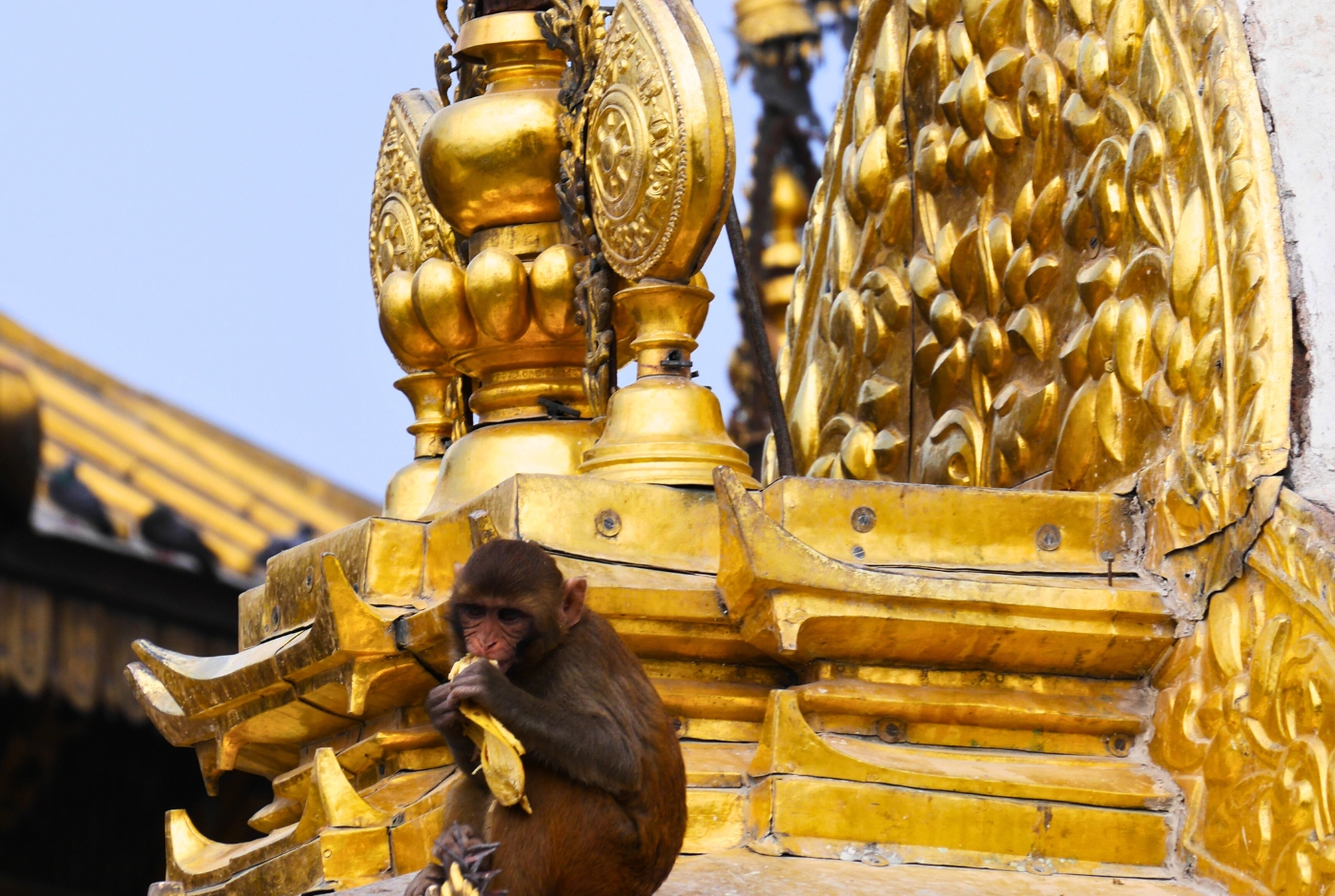
How many stairs are in Swayambhu?
There are approximately 365 stairs leading up to Swayambhunath Stupa on the eastern side of the hill. Alternatively, you can reach the top via a road on the western side of the stupa.
What is the symbol of Swayambhu?
The main symbol of Swayambhunath, also known as the Monkey Temple, is the "Buddha eyes" or "Wisdom eyes" painted on the main stupa. These eyes, one on each of the four sides, symbolize the all-seeing wisdom and compassion of the Buddha. Between the eyes, a curly symbol, resembling a question mark, represents the Nepali number "1," which signifies unity.
In Conclusion
Here, we present a detailed blog about Swayambhunath Stupa, covering its history, fascinating facts, and significance among travelers. Learn why it's called the Monkey Temple, its exact location, and entry fee details. This guide will help you explore this sacred site, write the best essay on Swayambhunath, and enhance your general knowledge about this UNESCO World Heritage landmark.



